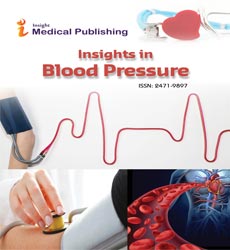Abstract
Effect of Aerobic Exercise Training on Cgmp Levels and Blood Pressure in Medicated Hypertensive Postmenopausal Women (Cgmp Levels and Blood Pressure in Women)
The second messenger cyclic guanosine 3’5’monophosphate (cGMP) has been in the focus of therapeutic target in a variety of disorders such as erectile dysfunction, arterial hypertension, atherosclerosis and heart failure. Nevertheless, a recent study has shown that cGMP activators are less efficient in estrogen deficiency animals. Thus, studies involving non-pharmacological approach examining NO/ cGMP signaling pathway in hypertensive postmenopausal women are clinically relevant. Therefore, we examined the concentrations of NO/cGMP, redox state and blood pressure in medicated hypertensive postmenopausal women (HT, n=28) at baseline and after aerobic exercise training (AET) comparing with normotensive group (NT, n=33). AET consisted of 24 sessions in treadmill, 3 times/week, 30-40 min for each session. Nitrite/nitrate, cGMP levels and redox state (SOD and catalase activity and TBARS levels) were similar between the two groups at baseline. In medicated HT group, AET was effective in increasing cGMP concentrations (28%), accompanied by an up-regulation of superoxide dismutase (SOD) and catalase activity, 97 and 37%, respectively. In NT group, we found an increase only in SOD activity (58%). In conclusion, our findings show that AET is an effective non-pharmacological approach in increasing cGMP levels as well as up-regulating antioxidant in medicated hypertensive postmenopausal women. It should also be emphasized that these findings provide information on the circulating biomarkers that might delay the developing of cardiovascular events in this particular population.
Author(s):
Novais IP, Jarrete AP, Puga GM, Araujo HN, Fernandes RA, Delbin MA and Zanesco A
Abstract | Full-Text | PDF
Share this

Google scholar citation report
Citations : 71
Insights in Blood Pressure received 71 citations as per google scholar report
Abstracted/Indexed in
- Google Scholar
- China National Knowledge Infrastructure (CNKI)
- Directory of Research Journal Indexing (DRJI)
- WorldCat
- Secret Search Engine Labs
Open Access Journals
- Aquaculture & Veterinary Science
- Chemistry & Chemical Sciences
- Clinical Sciences
- Engineering
- General Science
- Genetics & Molecular Biology
- Health Care & Nursing
- Immunology & Microbiology
- Materials Science
- Mathematics & Physics
- Medical Sciences
- Neurology & Psychiatry
- Oncology & Cancer Science
- Pharmaceutical Sciences
